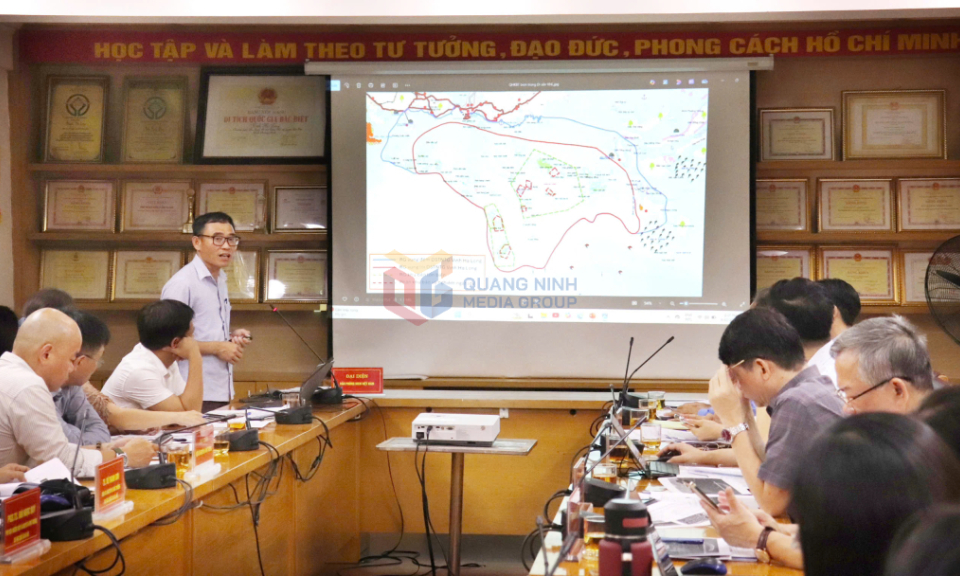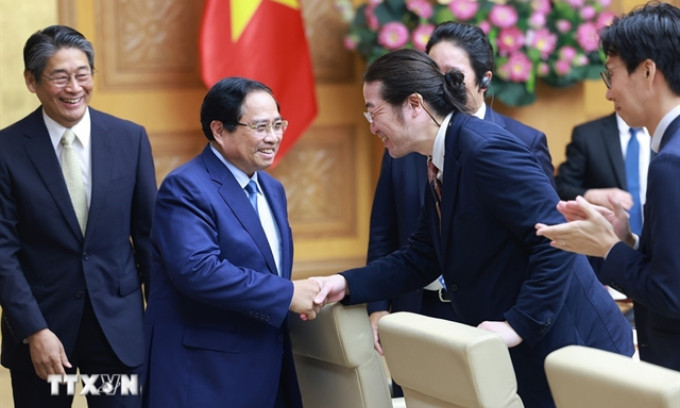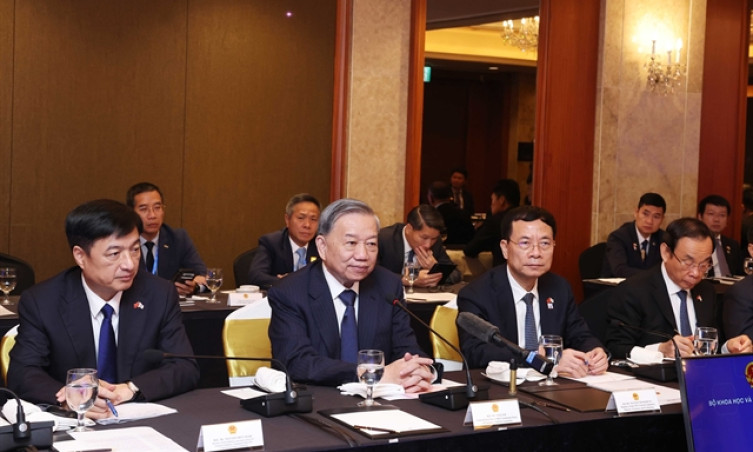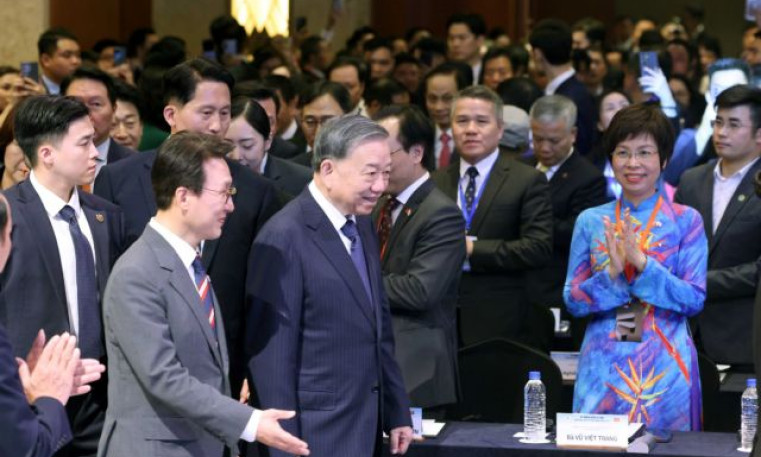Việt Nam raises 2025 growth target, launches ambitious economic roadmap
Việt Nam has revised its 2025 GDP growth target upwards to 8.3–8.5 per cent, replacing an earlier goal of 8 per cent, under a sweeping new resolution that outlines immediate action across all sectors and regions.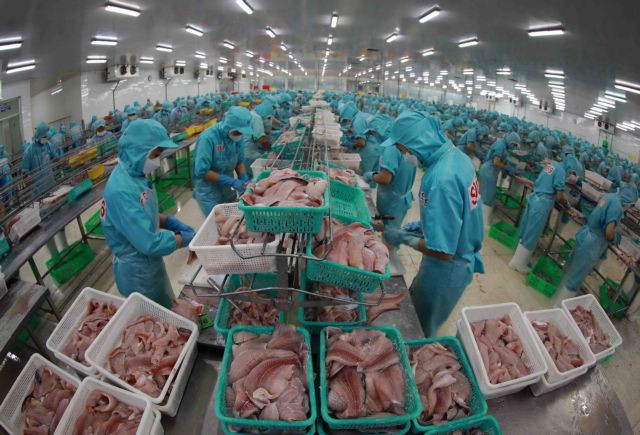
Việt Nam has raised its economic ambitions for 2025, with the Government issuing a sweeping directive targeting gross domestic product (GDP) growth of between 8.3 and 8.5 per cent, up from the previously announced 8 per cent.
The new policy, outlined in Resolution 226 released on August 5, replaces February’s Resolution 25. It reflects a strategic course correction by the Government to accelerate economic momentum and lay a foundation for double-digit GDP growth (10 per cent or higher) in 2026.
To reach these goals, the resolution lays out a comprehensive, cross-sectoral agenda focused on investment, public infrastructure, credit management, consumption, export expansion and the development of new economic drivers.
Ministries, agencies and provincial governments are required to take immediate action and report detailed implementation scenarios.
Stronger targets for growth, inflation and investment
Việt Nam’s new resolution reiterates the Government’s guiding principle of prioritising growth in tandem with macroeconomic stability.
The key economic targets for 2025 include a GDP growth rate of between 8.3 and 8.5 per cent, an inflation rate of below 4.5 per cent, a total social investment increase of up to 12 per cent and about VNĐ2.8 quadrillion (US$106 billion) mobilised for investment in the second half of the year.
The State Bank of Vietnam is tasked with managing monetary policy flexibly and proactively to stabilise interest rates, the foreign exchange market and credit growth.
Lending rates are expected to be lowered, bad debts curbed and credit directed toward traditional growth sectors – including investment, exports and consumption – as well as emerging ones, such as digital transformation, innovation and green industries.
One of the central pillars of the resolution is a mandate for 100 per cent disbursement of the 2025 public investment plan, including capital from the 2024 revenue surplus and budget savings.
Key infrastructure targets include completion of the eastern North–South Expressway, delivery of 1,700km of coastal roads and preparatory work for key rail projects, including the Lào Cai–Hà Nội–Hải Phòng railway and the North–South high-speed railway.
Special emphasis is placed on expediting procedures for large energy projects and removing legal barriers for direct renewable energy trading and rooftop solar generation.
Fiscal expansion paired with social investment
The Ministry of Finance will pursue a more expansive fiscal policy, targeting at least 25 per cent growth in State budget revenues over the planned estimate.
At the same time, ministries are required to reduce regular expenditures, including an additional 10 per cent cut over the last seven months of the year, to redirect funds toward social programmes.
Key welfare and education targets include eliminating substandard housing for war veterans and martyrs’ families by July 27, eradicating all makeshift or dilapidated housing nationwide by August 31 and ensuring no shortage of classrooms or schools nationwide by the 2025-2026 academic year.
Boarding and semi-boarding schools will be constructed in mountainous, border and island areas to ensure equitable access to education.
To strengthen domestic demand, the Ministry of Industry and Trade has been directed to implement a wide range of initiatives, including promoting digital trade platforms to achieve over 25 per cent growth in e-commerce, supporting domestic brands via campaigns such as 'Vietnamese Excellence' and 'Proudly Made in Vietnam', expanding the domestic retail network and enhancing consumer access to Vietnamese goods.
Price stability and anti-smuggling measures will be reinforced, with strict enforcement against counterfeit goods, hoarding and price manipulation.
Tourism is another key priority. The Government aims to attract 25 million international tourists and 150 million domestic tourists in 2025. Localities are instructed to develop diverse, high-quality tourism products and combine tourism with the consumption of One Commune One Product (OCOP) goods.
The Ministry of Public Security and the Ministry of Foreign Affairs will also coordinate to streamline visa procedures to support inbound tourism.
Strategic expansion of FTAs
Việt Nam will continue its active pursuit of trade agreements to enhance export competitiveness. The Ministry of Industry and Trade is directed to advance negotiations for a reciprocal trade agreement with the US, finalise and sign new free trade agreements (FTAs) with Middle Eastern, Indian, African and Latin American markets, and upgrade the ASEAN Trade in Goods Agreement.
Export regulatory barriers are also set to be urgently reviewed and removed, with a particular focus on long-standing issues raised by businesses and industry associations.
Customs and technical inspection procedures will be simplified to reduce clearance times and logistics costs, with priority given to perishable agricultural and forestry goods during peak harvest periods.
The resolution also highlights four emerging pillars as the country’s future growth drivers: science and technology, innovation and digital transformation, a skilled workforce and deepened global economic integration.
Concrete actions include promoting the digital economy, green economy and circular economy, supporting sectors like artificial intelligence, big data, cloud computing and cultural and creative industries, and modernising healthcare and education in alignment with the country’s new development stage.
The Ministry of Finance is tasked with finalising proposals to upgrade Việt Nam’s stock market to emerging market status and expand international financial hubs, free trade zones and border economic zones.
In alignment with the Government’s environmental agenda, ministries and major cities (including Hà Nội and HCM City) must implement urgent measures to combat environmental pollution under Directive 20.
The directive includes efforts to ensure energy security and promote the development of green transportation systems. Policies will also be introduced to support individuals and businesses investing in sustainable mobility.
Strengthening two-tier local government
A key governance reform in the resolution focuses on ensuring that the two-tier local government system functions efficiently.
All ministries and localities must complete restructuring in line with Resolution 18, implement digital transformation to support local administration, build a local government workforce that is ethical, capable and close to the people, and secure timely funding for implementation of Decree 178 and Decree 67 regarding personnel and institutional arrangements.
All ministries, agencies and provinces are required to submit growth scenarios for the remainder of 2025, including sector-specific targets and action plans, by August 15. These plans must align with the appendices of Resolution 226 and include data-driven forecasts based on GRDP estimates, resource mobilisation potential and regional growth opportunities.
Resolution 226 marks a significant shift in Việt Nam’s growth strategy, underscoring the Government’s resolve to maintain macroeconomic discipline while mobilising all available policy levers to stimulate domestic production, attract investment and prepare for the global economy’s next cycle of expansion.


